Completion of tooth defects or complete correction of own teeth.
Thanks to prosthetic procedures we can significantly improve not only the aesthetics and patient comfort of life, prosthetic treatment is also used to improve the basic function of the dentition as for example, the chewing function. Prosthetic treatment is performed using fixed prostheses (veneers, crowns, bridges) or mobile (complete and partial acrylic prostheses, skeletal prostheses, disposable prostheses, acrylic prostheses). We provide the highest quality prosthetic treatment in full range. Prior to the procedure, we develop an individual treatment plan for each patient.
Do you know!? The bridge is a denture reconstructive denture embedded permanently on the adjacent gapped self-teeth or implants head. Pillars. The implant is a root of the tooth, usually in the form of a screw, made of titanium, which is a metal that is indifferent to the human body. The bone tissue is closely associated with it as a “foundation” for fixing the crown or prosthetic bridge.
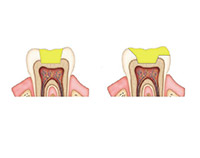
Inserts onlay or inlay – These are complementary to hard tissue of the crown of the tooth, lost due to tooth decay, injury or pathological clash. Onlay cartridges cover the entire chewing surface of the tooth and the inlay cartridges are part of the surface. Most often they are made of ceramics or composite materials. They feature high strength, low abrasion, very good aesthetics and perfect fit for the treated tooth and neighboring teeth.
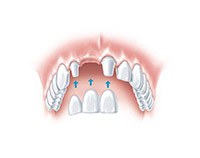
Crowns, bridges and veneers – Crowns is the restoration of the missing significant amount of tooth tissue or teeth completely broken, but with well preserved and properly rooted roots. In this case, it is necessary to make a crown-root cartridge. Porcelain bridges – Thanks to their use, we can permanently rebuild missing teeth with full patient comfort and aesthetics. When making porcelain bridges we use the same kind of restorations as porcelain crowns.
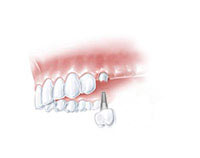
Coronal / root-shaped inserts – When a tooth is already damaged enough that it is unable to maintain the prosthetic crown, insert a crown- The root has a root portion rooted in the root canal of the tooth and a crown portion that projects into the mouth and has a toothed shape under the crown of the prosthetic. The material from which the insert is made is selected for the future crown. Zirconium (full ceramic) or fiberglass.
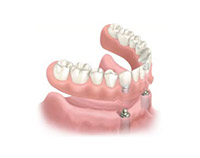
Acrylic prostheses – A supplement that applies in the event of total or significant absence of a patient’s dentition. The prosthesis is not permanently installed in the mouth – it can be removed – which is not always comfortable, but may be the only reasonable complement to the dentition that can be used. Dentures can be divided into complete and partial. Complete dentures complement all jaw and / or jaw (jaw) teeth. Partial prostheses, complemented by several to a dozen missing teeth.
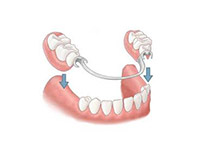
Skeletal prostheses – prostheses complementary to partial deficiencies in the dentition, which do not qualify themselves in addition to bridges. They are best served by moving parts of the prosthetic infrastructure. The metal frame is much thinner, with no major restriction on the make-up – almost no palate – with upper prosthesis, no better – they do not fall, they are fixed on the braces, they do not compress the gums and palate.
Do you know!? Prosthetic crowns are prostheses that reproduce in function and appearance a single crown of the natural tooth. It is permanently fixed by means of cement on a properly grounded tooth, a metal crown or root canal or an implant head. The most cosmetic crowns are made of ceramics (the so-called porcelain).
